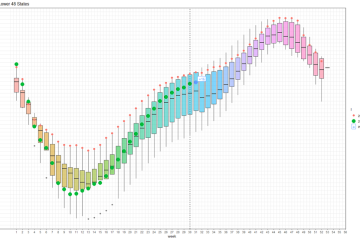Kawasaki Vs Niigata: Cities of Innovation and Tradition

Introduction
Kawasaki and Niigata are two significant cities in Japan, each with unique characteristics that reflect their cultural, economic, and historical backgrounds. Kawasaki, located in the Kanagawa Prefecture, is known for its industrial prowess and proximity to Tokyo, while Niigata, situated on the western coast of Honshu, is celebrated for its rich agricultural heritage and scenic beauty. Understanding the distinctions between these cities held considerable importance in various aspects such as tourism, economy, and quality of life.
Kawasaki: The Industrial Hub
Kawasaki, renowned for its industrial landscape, plays a pivotal role in Japan’s economy. Its strategic location between Tokyo and Yokohama makes it a prime area for various businesses and enterprises. Major industries in Kawasaki include manufacturing, primarily focused on steel production, electronics, and machinery. The city is home to the Kawasaki Heavy Industries, a significant player in the Japanese heavy industry sector. Moreover, Kawasaki has been working towards innovation by investing in startups and technology hubs, fostering a blend of tradition and modernity.
Niigata: The Scenic Agricultural Heartland
In contrast, Niigata is known for its agricultural output, particularly rice and sake production. The city’s picturesque landscapes, marked by mountains and coastlines, attract tourists seeking both adventure and relaxation. Niigata hosts one of Japan’s largest rice-producing areas, resulting in a thriving agricultural sector. The region is famous for its high-quality sake and rice, such as the Koji and Koshihikari varieties. Niigata is also making strides in sustainable farming practices, reflecting a growing trend towards eco-friendly agriculture.
Comparative Analysis
While Kawasaki is an industrial hub with a strong focus on manufacturing and technology, Niigata offers a different lifestyle characterized by agriculture and natural beauty. Both cities, however, face challenges such as urbanization and environmental sustainability. Kawasaki’s rapid urban growth has raised concerns over pollution and infrastructure strain. On the other hand, Niigata’s agricultural sector is dealing with the effects of climate change, impacting traditional farming methods. Nevertheless, both cities have devised strategies to tackle these challenges, emphasizing sustainability and innovation.
Conclusion
In conclusion, Kawasaki and Niigata represent two contrasting yet complementary aspects of Japanese society. Kawasaki’s industrial advancements and Niigata’s agricultural wealth contribute significantly to Japan’s diverse economy and culture. As both cities continue to evolve, the collaboration between industry and nature can serve as a model for sustainable development. For readers, understanding these differences enhances appreciation for the complexity of Japan’s urban and rural landscapes, supporting informed travel and investment decisions.









